

Perspectives: An Open Access Intro Anthro Textbook. (This guest post by Nina Brown, Thomas McIlwraith, and Laura Tubelle de González announces the launch of what I believe is the first open access textbook for an introduction to cultural anthropology course.
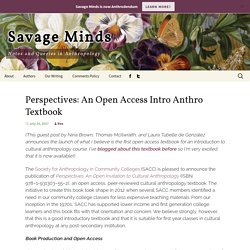
南方熊楠記念館 – Minakata Kumagusu Museum. Ethnic Distribution Of Blood Types. Itim International -Enabling Global Effectiveness- Dimensions - Geert Hofstede. About the research.
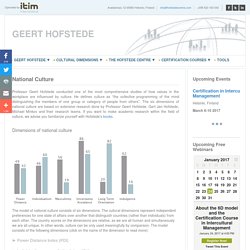
The Sex Thieves - HAU Books. The Anthropology of a Rumor by Julien Bonhomme Translated by Dominic Horsfall Foreword by Philippe Descola While working in Africa, anthropologist Julien Bonhomme encountered an astonishing phenomenon: people being accused of stealing or shrinking the genitals of strangers on the simple occasion of a handshake on the street.
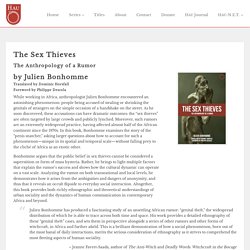
Announcing the development of SocArXiv, an open social science archive – SocOpen: The SocArXiv blog. It’s past time for social scientists to bring their work out into the open, to make it better, faster, more accountable, and more transparent.

July 2016 SocArXiv announces a partnership with the Center for Open Science to develop a free, open access, open source archive for social science research. The initiative responds to growing recognition of the need for faster, open sharing of research on a truly open access platform for the social sciences. Papers on SocArXiv will be permanently available and free to the public. Social scientists want their work to be broadly accessible, but it is mostly locked up from the public and even other researchers – even when the public has paid for it.
Max Planck Institute for the Science of Human History. Languages, like genes, are “documents of history”.
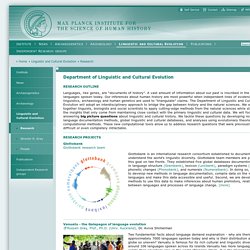
A vast amount of information about our past is inscribed in the 7000 languages spoken today. Our inferences about human history are most powerful when independent lines of evidence from linguistics, archaeology and human genetics are used to “triangulate” claims. The Department of Linguistic and Cultural Evolution will adopt an interdisciplinary approach to bridge the gap between history and the natural sciences. We will bring together linguists, biologists and social scientists to apply cutting-edge methods from the natural sciences while still utilising the insights that only come from maintaining close contact with the primary linguistic and cultural data.
Max Planck Institute for the Science of Human History. D-PLACE. Top Fourteen Anthropology Journals. Resource: The World of Abnormal Psychology. 1.
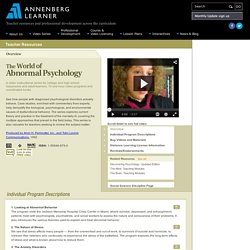
Looking at Abnormal Behavior The program visits the Jackson Memorial Hospital Crisis Center in Miami, where suicidal, depressed, and schizophrenic patients meet with psychologists, psychiatrists, and social workers to assess the nature and seriousness of their problems. It also introduces the various theories used to explain and treat abnormal behavior. HAU-N.E.T. HAU-N.E.T., or the HAU Network of Ethnographic Theory, is an international network of research centres and anthropology departments working together to support HAU’s flagship journal and its innovative book series.
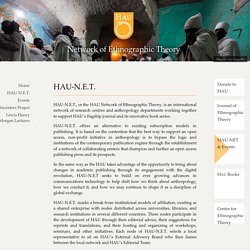
HAU-N.E.T. offers an alternative to existing subscription models in publishing. It is based on the contention that the best way to support an open access, non-profit initiative in anthropology is to bypass the logic and institutions of the contemporary publication regime through the establishment of a network of collaborating centers that champion and further an open access publishing press and its prospects. HAU-N.E.T. marks a break from institutional models of affiliation, existing as a shared enterprise with nodes distributed across universities, libraries, and research institutions in several different countries. HAU-N.E.T. Cultural information for education and research. L’alcool rituel et les ethnographes. Après les numéros des revues Terrain (1989) et Socio-anthropologie (2004) consacrés au « boire », ce dossier thématique se décline autour de deux aspects des conduites d’alcoolisation rituelle.
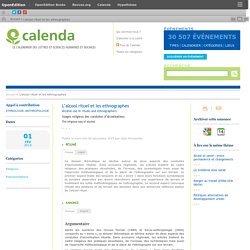
Sans exclusive régionale, les articles traitent du cadre religieux des pratiques alcoolisées, de l’ivresse, des symboliques mais aussi de l’approche méthodologique et de la place de l’ethnographe sur son terrain. Le premier aspect traite des boissons et du « boire » dans leurs fonctions symboliques et sociales observées par divers chercheurs ayant une expérience de terrain et mobilisant les outils méthodologiques de l’ethnographie. L’alcool est envisagé ici comme une sociabilité qui se détache du champ de la pathologie (Douglas ; Fabre-Vassas ; Fainzang).
Ainsi, l’alcool, comme offrande, est déposé, aspergé et/ou consommé en quantité variable ; il est une substance nécessaire à l’efficacité rituelle et à la commensalité. Bianquis I., 2012 L’alcool. Pour le 1er février 2016. CARAP. CARAP > Teacher training > FREPA - A training kit. This page offers self-study materials for teachers and other educational stakeholders.
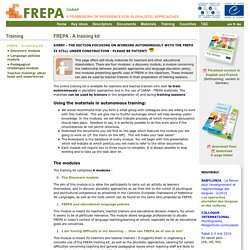
There are four modules: a discovery module; a module concerning the relationship between pluralistic approaches and language education policy; two modules presenting specific uses of FREPA in the classroom. Culture Bound Syndrome - Murphy. DSM-5 on Culture: A Significant Advance. [A]ll forms of distress are locally shaped, including the DSM disorders. – DSM-5 (APA, 2013, p. 758) The fifth edition of the Diagnostic and Statistical Manual of Mental Disorders (DSM-5; APA, 2013) was finally presented on May 18th at the American Psychiatric Association’s annual meeting in San Francisco.
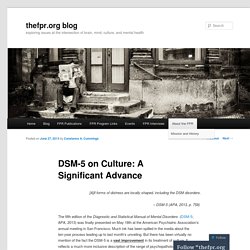
Ch22 15. Cultural Bound Syndromes. Cultural information for education and research.